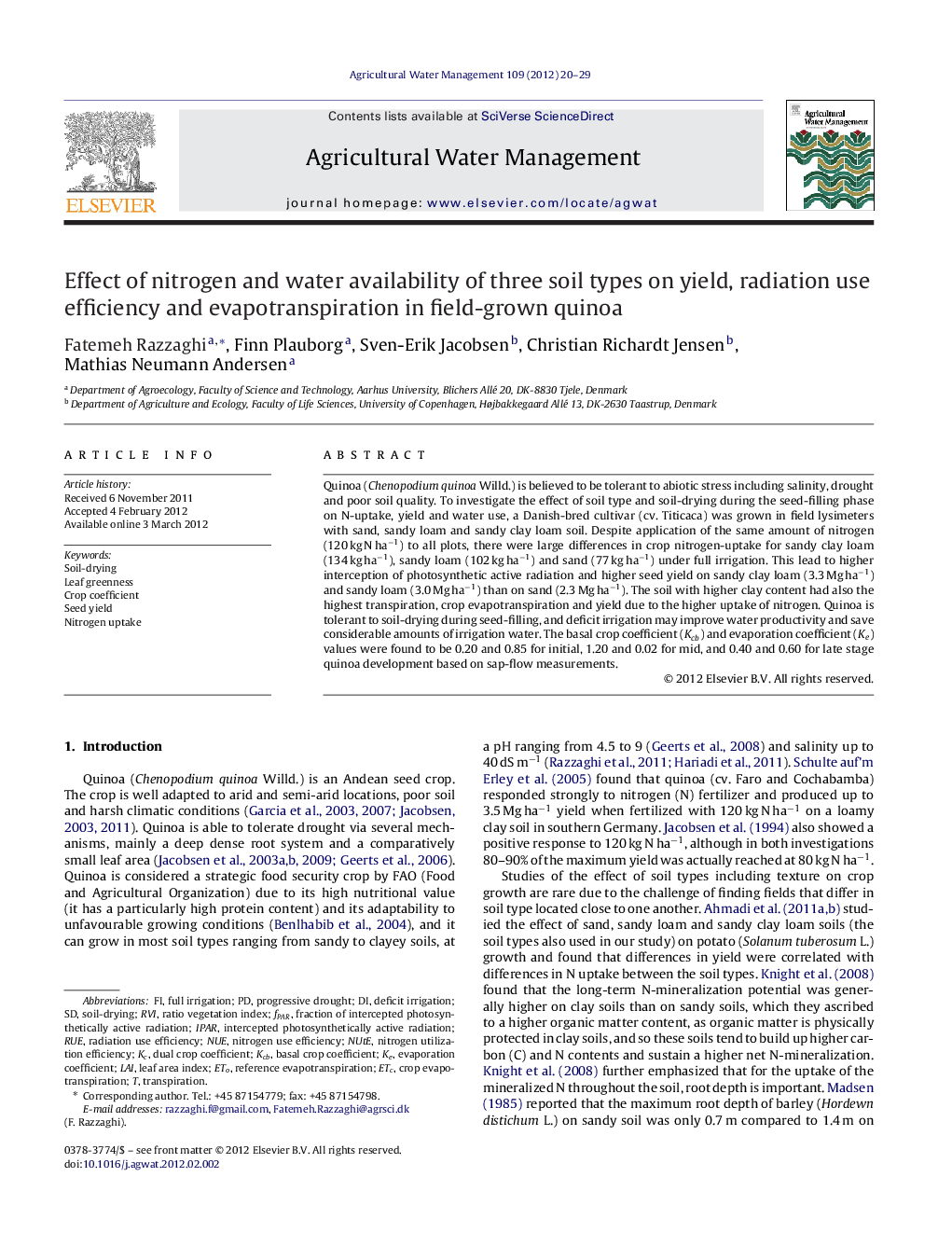| Article ID | Journal | Published Year | Pages | File Type |
|---|---|---|---|---|
| 4479108 | Agricultural Water Management | 2012 | 10 Pages |
Quinoa (Chenopodium quinoa Willd.) is believed to be tolerant to abiotic stress including salinity, drought and poor soil quality. To investigate the effect of soil type and soil-drying during the seed-filling phase on N-uptake, yield and water use, a Danish-bred cultivar (cv. Titicaca) was grown in field lysimeters with sand, sandy loam and sandy clay loam soil. Despite application of the same amount of nitrogen (120 kg N ha−1) to all plots, there were large differences in crop nitrogen-uptake for sandy clay loam (134 kg ha−1), sandy loam (102 kg ha−1) and sand (77 kg ha−1) under full irrigation. This lead to higher interception of photosynthetic active radiation and higher seed yield on sandy clay loam (3.3 Mg ha−1) and sandy loam (3.0 Mg ha−1) than on sand (2.3 Mg ha−1). The soil with higher clay content had also the highest transpiration, crop evapotranspiration and yield due to the higher uptake of nitrogen. Quinoa is tolerant to soil-drying during seed-filling, and deficit irrigation may improve water productivity and save considerable amounts of irrigation water. The basal crop coefficient (Kcb) and evaporation coefficient (Ke) values were found to be 0.20 and 0.85 for initial, 1.20 and 0.02 for mid, and 0.40 and 0.60 for late stage quinoa development based on sap-flow measurements.
► Quinoa is tolerant to soil-drying during grain filling. ► Higher nitrogen uptake in clay-richer soil led to higher yield production. ► Soil with the highest clay content had the highest transpiration and yield.
